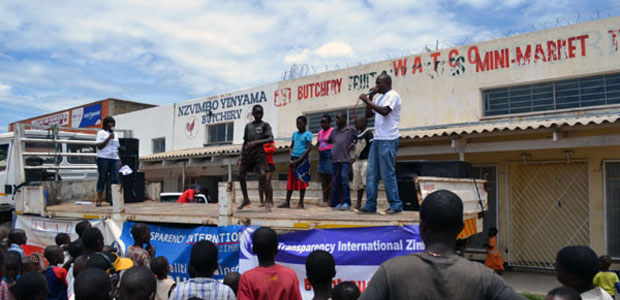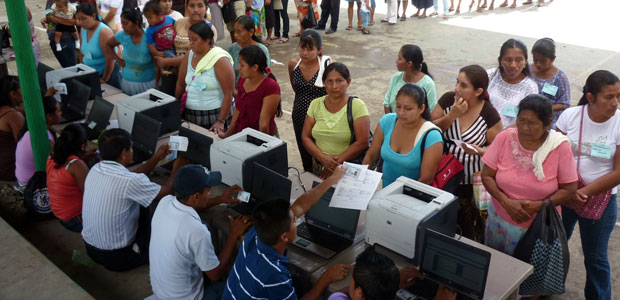This week the United Nations is bringing experts and world leaders to Indonesia to debate development priorities beyond 2015, when the Millennium Development Goals expire. Good governance tops the list of what to add to the current eight targets.
We want to make certain that good governance and anti-corruption form part of the promises and solutions post 2015 – because they can make a tangible difference in delivering all the goals.
The transparency payoff
A TI study from 2010 has shown the huge, positive impacts transparency can have on development – if you reverse the corruption-poverty equation. For example:
The findings suggest that higher levels of access to information — such as on a school’s budget, resource inflows provided to schools and appointment procedures for teachers and school administrators — is positively and significantly correlated with higher literacy rates.
In other words, make a school budget more transparent, our research shows, and literacy rates go up.
If we had an anti-corruption or “good governance” goal for all countries, what would we do to put the transparency pay-off into practice:
1. Inform communities and individuals of their rights

Here in Rwanda, actors drawn from the community explain that people have legal rights to free public services. Informed citizens are empowered to say ‘no’ to bribes that school masters may try to charge for free schooling or that doctors may try to exert for care that should be free.
2. Help communities voice demands for better services

In countries from Bangladesh to Zimbabwe, Transparency International chapters are working with communities to outline their needs and demands – from new schools and water wells, to sewage systems and better-stocked health clinics. The picture above shows a roadshow at a Harare shopping centre to protest repetitive power failure in Zimbabwe due to mismanagement in the country’s only power company.
3. Get public officials to fulfil promises

Even if communities know what they want, will their public officials listen? Transparency International chapters in Uganda, Burundi and India (pictured above) have focused on finding local champions who are willing to go on record with their promises for change. They work with these officials – whether a mayor or head of the local water company – to sign public pledges about what services will be delivered. The pledges are monitored by civil society to cross-check if they are upheld.
4. Identify governance breakdowns and corruption risks

Part of defining the problems means knowing where the risks for corruption lie in public services, companies and institutions. This is something all countries need to do – and the findings can be startling as we have found out for European countries. In other cases, knowing the risks means looking at companies or public services.
Transparency International chapters are working with local communities to identify the risks for the services that they receive. In Guatemala (picture above) the chapter is monitoring the health and education stipend programme.
5. Tackle the full-range of the problem – from public institutions to specific sectors like education

Corruption in public services is often a manifestation of wide-spread ills in public institutions and the private sector. Taking on the bigger problem – of governance and giving people a voice – is something that are chapter in Fiji (pictured above) has done as it works to provide women and other groups’ inputs into the new constitution.
And now is the time to kick-start change. What do you think is the best way to do this? Do we need a new MDG to fight corruption?















 Connect with us on Facebook
Connect with us on Facebook Follow us on Twitter
Follow us on Twitter